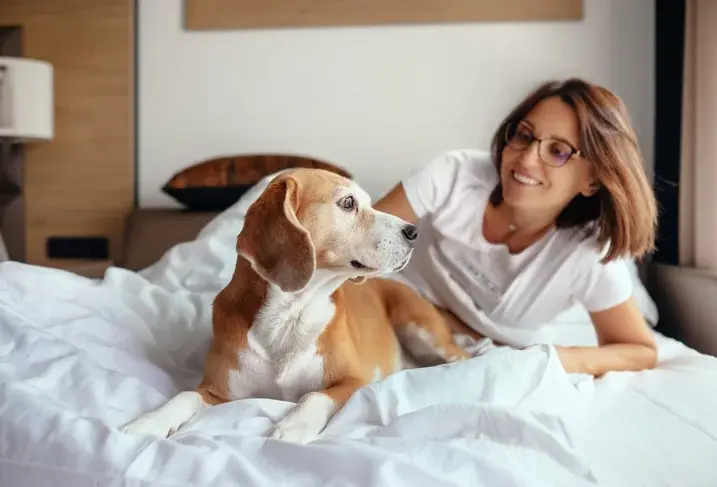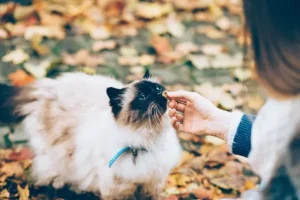Why Is My Dog Panting While Resting? A Complete Guide to Causes, Concerns, and Solutions If you’ve noticed your dog panting even while resting, it’s natural to feel a bit concerned. Panting is common in dogs, especially after exercise, but when it occurs at rest, it can indicate something more than just being hot or tired. In this guide, we’ll dive deep into the reasons behind why your dog might pant at rest, helping you understand when it’s normal and when it’s a sign to seek veterinary help. We’ll also cover common symptoms, potential underlying causes, and solutions to keep your furry friend comfortable and healthy.
Why Is My Dog Panting While Resting?
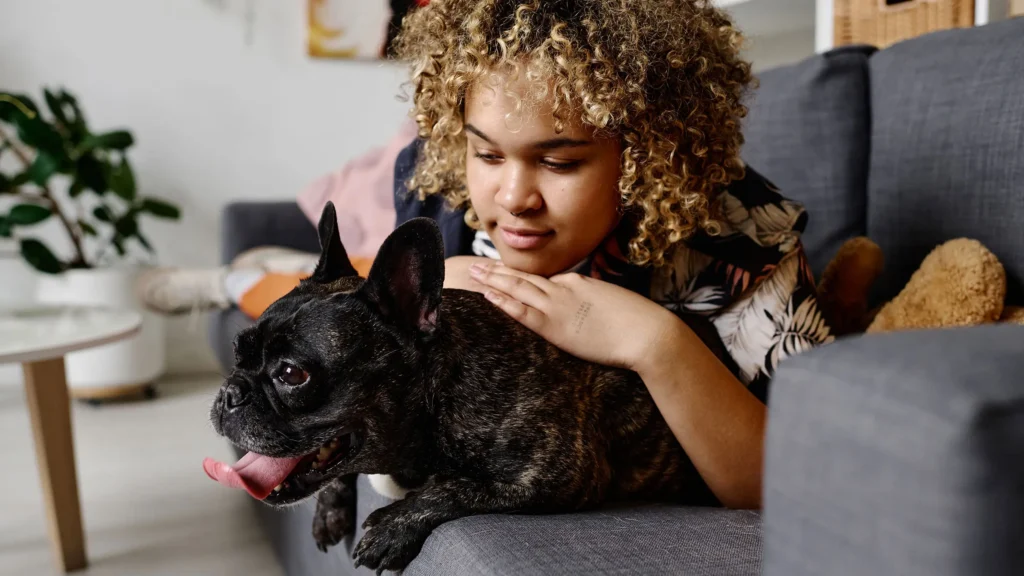
What Is Panting in Dogs?
Panting is a natural behavior for dogs and serves as their primary way of regulating body temperature. Unlike humans, dogs don’t sweat through their skin. Instead, they cool down by rapidly breathing in and out through an open mouth, which allows moisture on the tongue and mouth to evaporate, helping cool their bodies. This rapid breathing increases airflow and releases excess heat from the dog’s body.
Most commonly, dogs pant after exercise, on hot days, or if they’re feeling stressed or anxious. However, if your dog is panting while resting, this might point to other factors affecting their health.
Normal vs. Abnormal Panting: Understanding the Difference
Normal Panting
- After Physical Activity: Panting is common after play or exercise.
- Hot Weather: Dogs will naturally pant more in warmer temperatures.
- Excitement or Mild Stress: Dogs might pant in situations that trigger mild excitement or temporary stress, such as meeting new people.
Abnormal Panting
- Resting Panting: Panting while at rest or during sleep could signal health concerns.
- Excessive Panting Without Apparent Cause: If your dog’s panting is excessive without a clear reason, it’s a red flag.
- Other Symptoms Present: If panting is accompanied by other signs like lethargy, coughing, or loss of appetite, it might indicate a more serious issue.
Top Reasons for Panting While Resting
Heat and Temperature Regulation
Even when indoors, factors like poor ventilation or high room temperatures can make dogs uncomfortable, leading them to pant as a cooling mechanism. Brachycephalic breeds (like Bulldogs and Pugs) are especially prone to overheating and may pant even at mild temperatures.
Anxiety and Stress
Dogs, much like people, have responses to stress and anxiety. Panting, pacing, or whining are some of the common signs of canine anxiety. Resting panting may occur if your dog has separation anxiety, fears noises (like thunderstorms or fireworks), or is generally stressed due to environmental changes.
Solution: Consider using calming treats, behavior training, or providing a safe, comfortable space to help your dog feel at ease.
Pain or Discomfort
If a dog experiences pain, they might pant even while resting. Pain can stem from various causes such as injury, arthritis, dental pain, or internal issues. If panting is accompanied by behaviors like restlessness, licking a specific area, or whining, it’s advisable to consult a vet.
Overweight and Obesity
Obesity in dogs adds stress to their bodies, making it harder to regulate temperature and breathe normally. If your dog is overweight, they might pant more often, even while at rest, as their body struggles to cool down.
Solution: Discuss a weight management plan with your vet to ensure your dog’s diet and exercise routine support a healthy weight.
Medication Side Effects
Certain medications can cause panting as a side effect. Common drugs associated with this include steroids (such as prednisone), painkillers, and medications for anxiety. Always consult with your vet if you suspect a medication might be causing excessive panting.
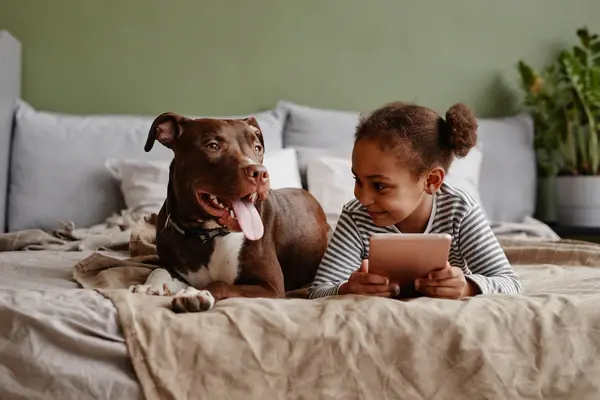
Heart Problems
Heart disease can cause dogs to pant frequently. When the heart struggles to pump blood effectively, it can lead to breathlessness, even at rest. Other symptoms to watch for include coughing, fatigue, and weakness.
Learn more about heart conditions in dogs here.
Respiratory Issues
Lung problems, such as pneumonia, bronchitis, or asthma, can interfere with normal breathing, leading to panting while at rest. Respiratory issues often come with other symptoms like coughing, wheezing, or nasal discharge.
Solution: Schedule a veterinary checkup if you observe signs of respiratory distress in addition to panting.
Hormonal Imbalance: Cushing’s Disease
Cushing’s disease, a condition characterized by an overproduction of cortisol, often causes dogs to pant excessively. Other symptoms of Cushing’s disease include increased thirst and urination, weight gain, and a pot-bellied appearance.
When to Be Concerned About Panting
Understanding when to seek medical attention for your dog’s panting is important for their health and comfort. Here are some signs to watch for:
- Sudden Onset of Panting at Rest: If your dog has suddenly started panting while resting and you cannot identify an obvious cause, it’s best to consult a vet.
- Persistent or Intense Panting: Continuous or labored breathing, even when your dog is calm, may indicate an underlying health problem.
- Other Symptoms Appear: If your dog is showing other signs such as vomiting, diarrhea, lethargy, or loss of appetite, this could indicate a more serious health concern.
- Discolored Gums: Pale or blue gums can indicate oxygen deprivation, which requires immediate veterinary attention.
Common Health Conditions Linked to Resting Panting
Several health conditions can cause dogs to pant while at rest. Here’s a closer look at some of the most common issues:
Heat Stroke
Heatstroke is a dangerous condition that can quickly become life-threatening. Dogs that are left in hot, unventilated areas or those that are exercised heavily in warm weather are at risk. Signs of heatstroke include drooling, excessive panting, and collapse.
Heart Disease
Heart disease affects a dog’s ability to pump blood effectively, which can cause breathlessness and panting. Heart murmurs, coughing, or frequent fatigue may accompany this condition.
Respiratory Illness
Respiratory illnesses like pneumonia or tracheal collapse can make it difficult for dogs to breathe, leading to increased panting. Tracheal collapse, in particular, is common in small dog breeds.
Pain or Injury
Any condition that causes pain, such as arthritis, injury, or internal discomfort, can lead to increased panting. Dogs experiencing chronic pain, such as that from arthritis, may pant at rest, especially during the night.
Anemia
Anemia reduces oxygen levels in the blood, leading to breathlessness and panting. Symptoms of anemia include pale gums, weakness, and lethargy.
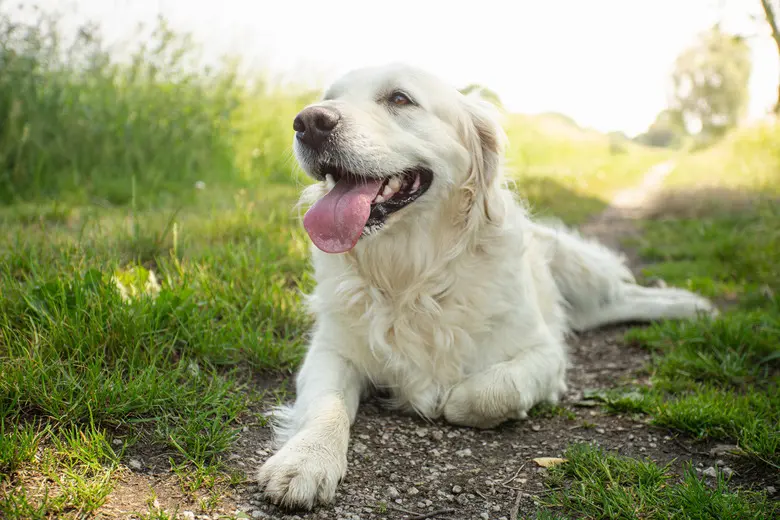
How to Help Your Dog if Panting Persists
If your dog’s panting is frequent and persistent, here are some steps to take:
- Visit Your Veterinarian: Always consult with your vet to rule out any serious health conditions.
- Manage Your Dog’s Environment: Ensure they have a cool, comfortable resting space.
- Monitor Medication Side Effects: If panting began after starting a new medication, consult your vet about possible side effects or alternative treatments.
- Exercise in Moderation: For overweight dogs, gentle, consistent exercise can help with weight management, but avoid over-exercising in warm weather.
- Consider Supplements: If your dog has anxiety, natural calming aids may help reduce stress-induced panting. Consult your vet about safe options.
Preventing Panting Issues in Dogs
- Routine Vet Checkups: Regular checkups can catch health issues early.
- Healthy Weight Management: Feeding a balanced diet and ensuring regular exercise can prevent obesity-related panting.
- Keep Your Dog Cool: During warm weather, provide shade, cool water, and avoid outdoor exercise in extreme heat.
- Monitor for Behavioral Changes: Anxiety and stress can be managed through positive reinforcement, routine, and safe spaces.
Conclusion
If your dog is panting while at rest, understanding the possible causes can help you determine whether it’s a normal behavior or a sign of a more serious issue. While panting is usually a natural response for dogs, resting panting, especially if frequent, can sometimes signal underlying health problems. Monitoring your dog’s behavior, managing their environment, and regular vet checkups are essential steps to ensure their well-being. Always consult a veterinarian if you have concerns about your dog’s health.
